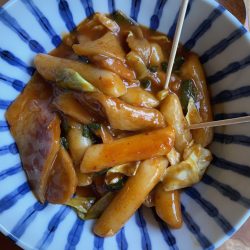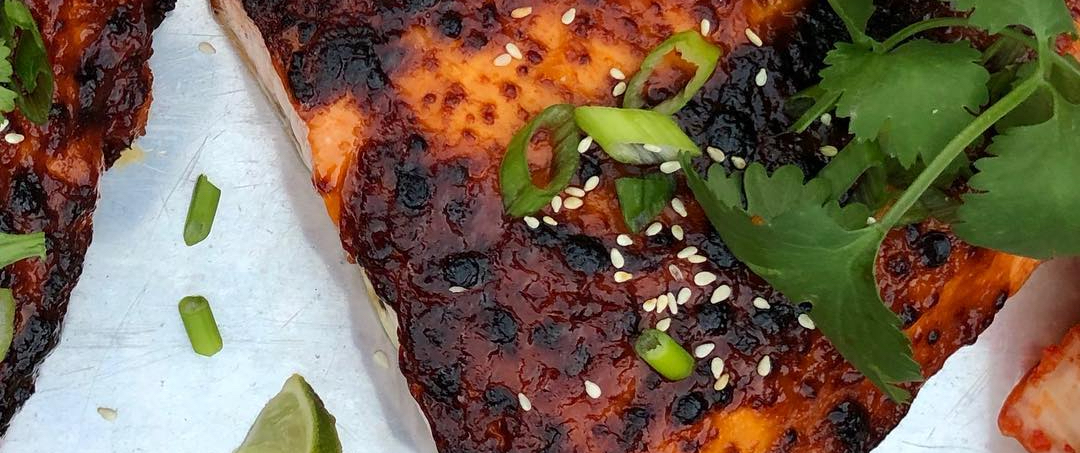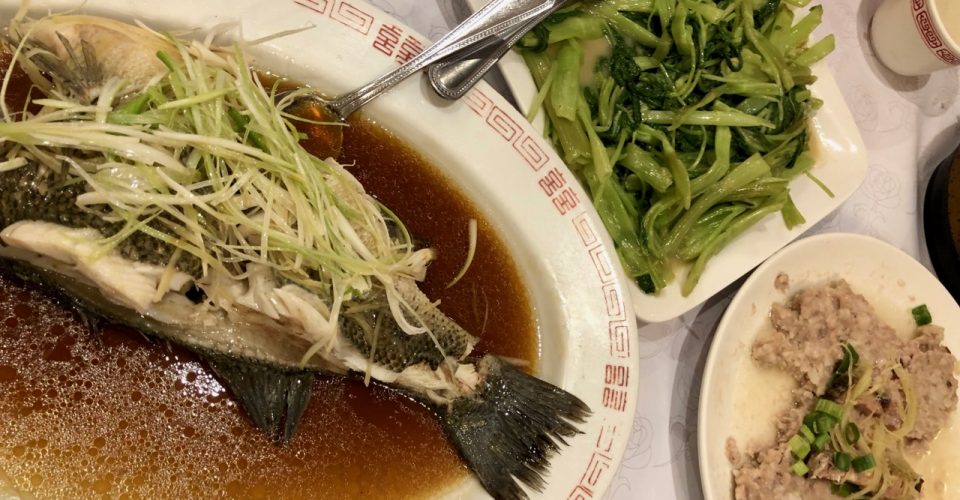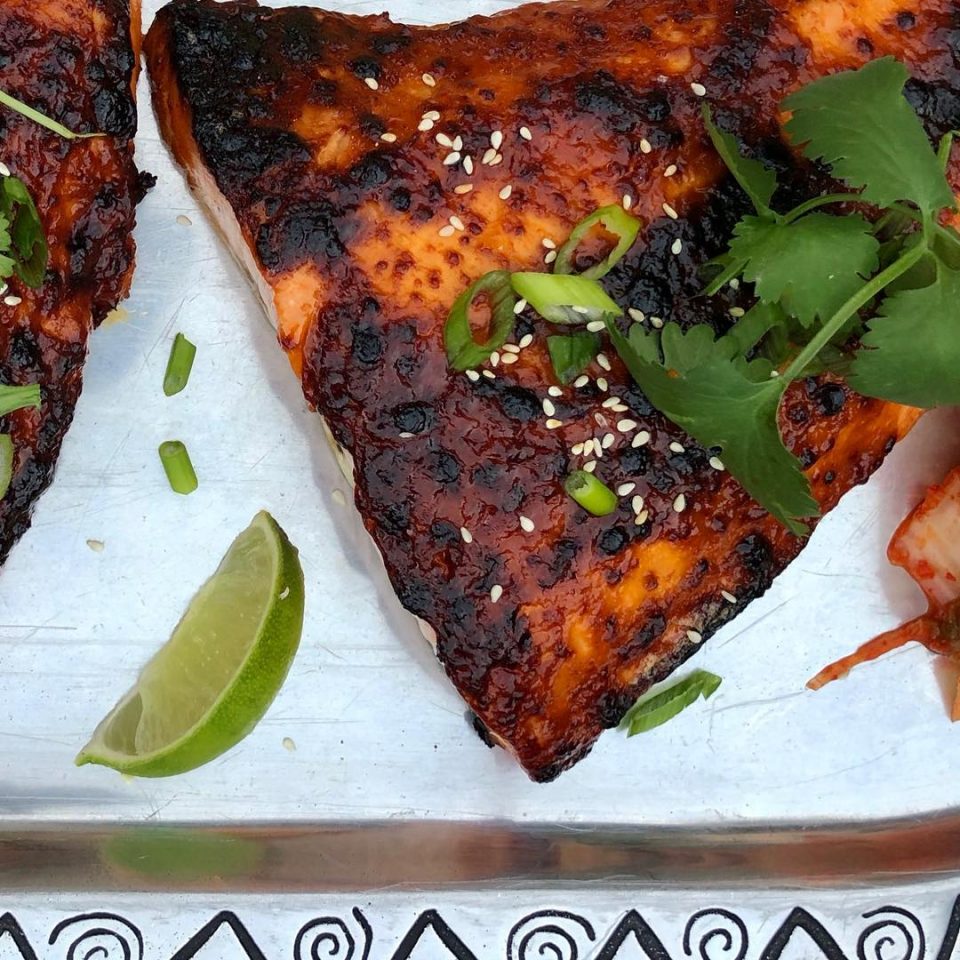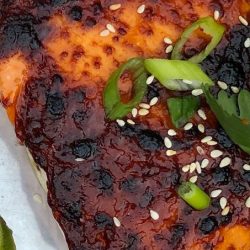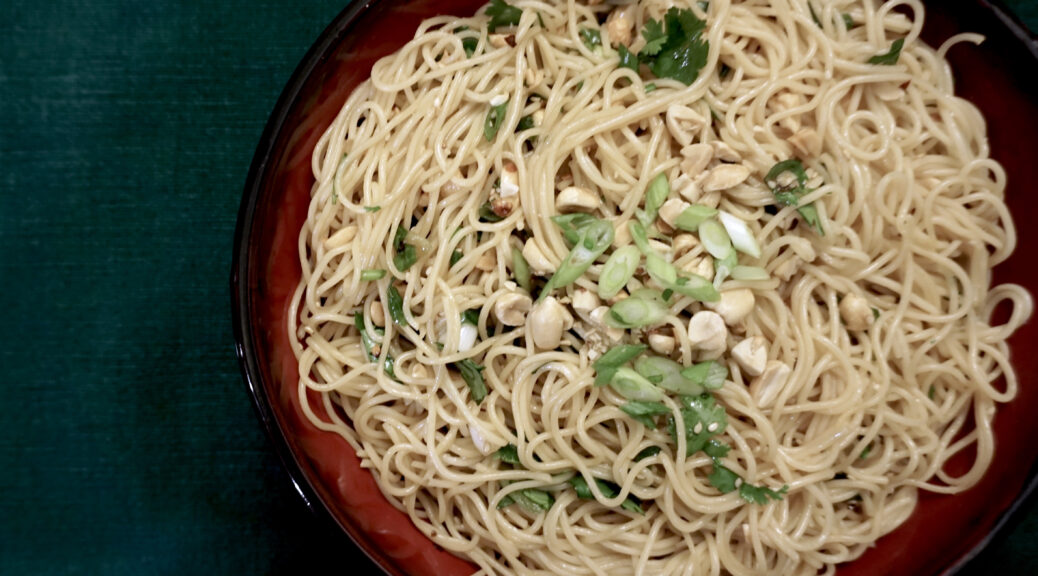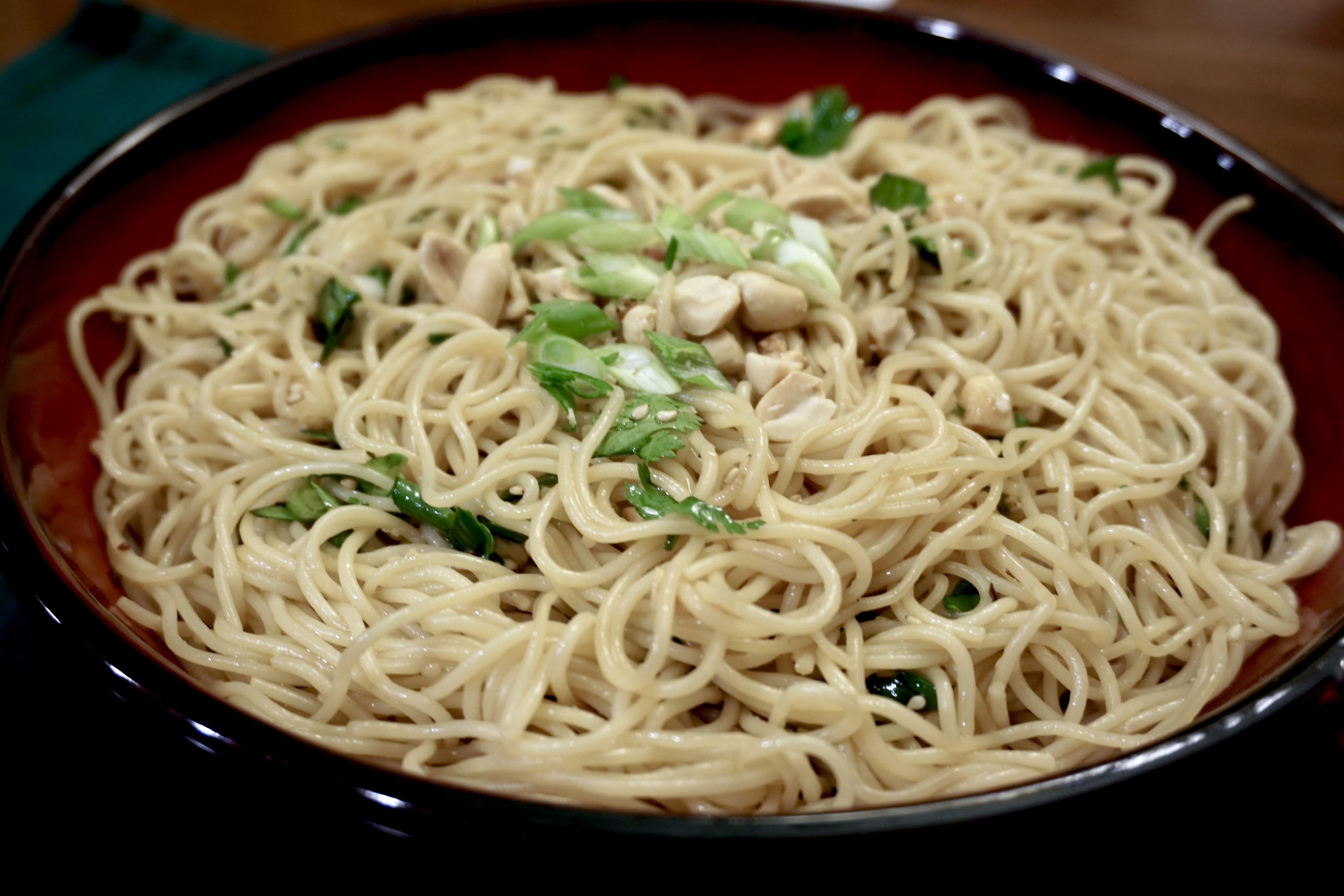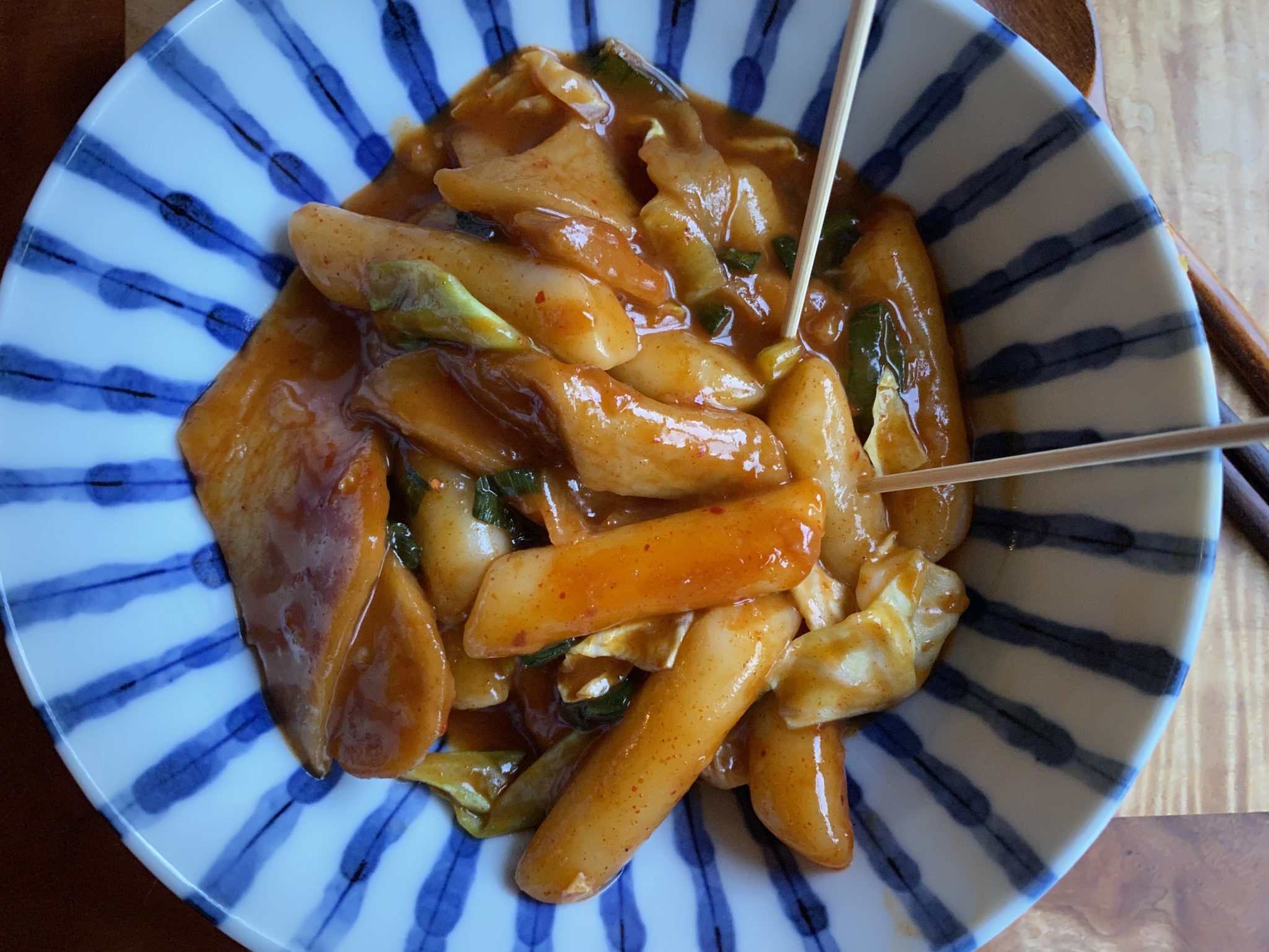
Do You Tteokbokki? Spicy Korean Rice Cakes
‘My fondest memories of traveling abroad, not surprisingly, revolve around food. It started when my parents sent me on a summer exchange program in Taiwan for Chinese American college kids. While our parents envisioned us hard at work learning Mandarin and Chinese culture, we were sneaking out to the night markets to eat, hooking up with newfound friends, and in general, having a good time. A documentary made about the program says it all, Love Boat Taiwan. My introduction to a whole new world of food, culture, and fun.
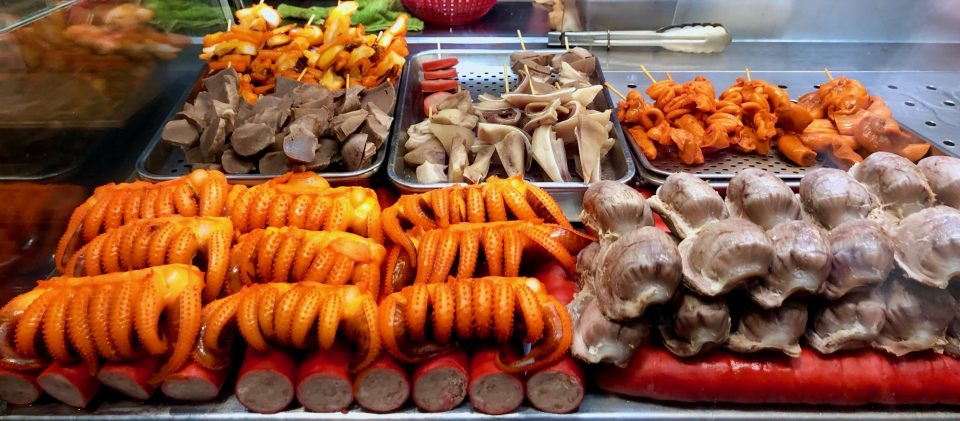
From the food stalls in Taipei long ago to the markets in Seoul and Osaka most recently; I have feasted on oyster omelets and dumplings (Xiao Lung Bao), Gimbap (Korean rice rolls), Galguksuk (hand-cut noodles), Hotteok (rice pancakes with sweet or savory fillings) and tteokbokki (rice cakes in a sweet and spicy sauce). I have sampled Takoyaki (Fried Octopus fritters), Kaarage (fried chicken), Gyoza (Potstickers), and Manju (rice cakes) from tiny makeshift kiosks, so delicious. A trip after college found me relishing the variety of Hawker Fare food in Singapore. Nonya, Indian, Muslim, Chinese dishes all in one spot. Who hasn’t drooled over the Hainanese Chicken enjoyed by Rachel and Nick in Crazy Rich Asians, all cheap and delicious. Street markets are soul food. Homey, simple, flavorful dishes remind me of family gatherings around the dinner table.
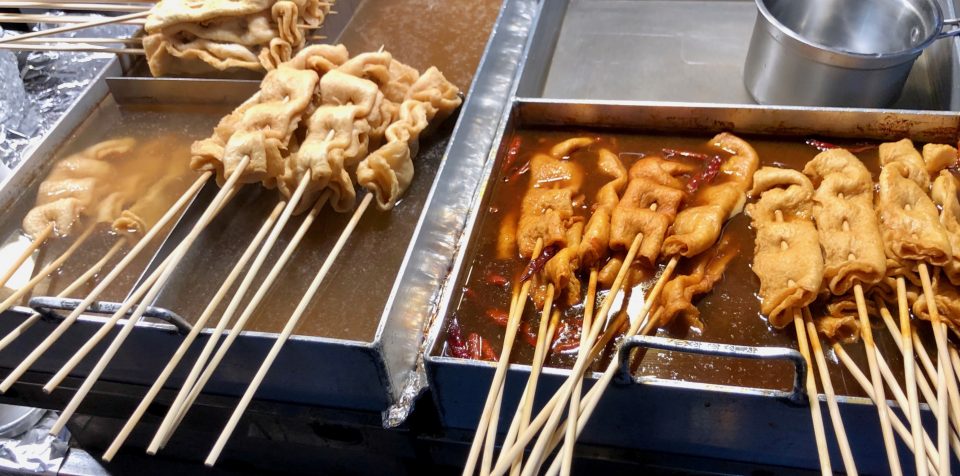
But, it’s not just about the food, it’s about getting a taste of daily life and culture-sitting next to that businessman as he hurriedly slurps his noodles down before going back to work Watching the vendors entice their next customer with their hand-pulled noodles or steaming dumplings. Or amusedly watching school children clamoring for their afterschool snack of gimbap or bao from the corner vendor.
That’s My Favorite Part of Traveling
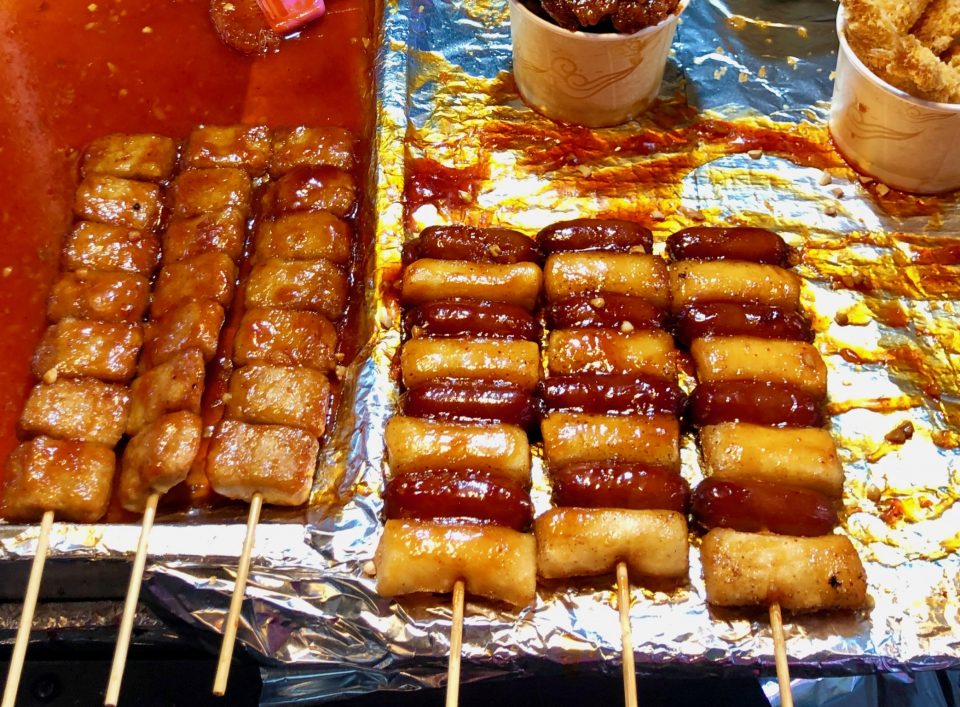
Dreaming about our travels last year has me hungry for the delicious street food we discovered. We took in a baseball game in Incheon and in place of traditional fries and hot dogs, we enjoyed Tteokbokki and KFC (Korean Fried Chicken). The Tteokbokki, spicy, sweet, and chewy was served on sticks with cute little hot dogs. I love watching baseball, it reminded me of watching a minor league game, lots of zaniness, fans with broomsticks, and cheerleaders to egg them on. The icing on the “rice”cake was the food and walk-up music for each batter.
Crazy Fun Baseball Game in Korea
I’ve taken to hunting for recipes to make these tasty tidbits and I found, Korean Bapsang, an absolutely great site with a treasure trove of Korean recipes that are easy to follow and 정말 맛있다 (really delicious)!
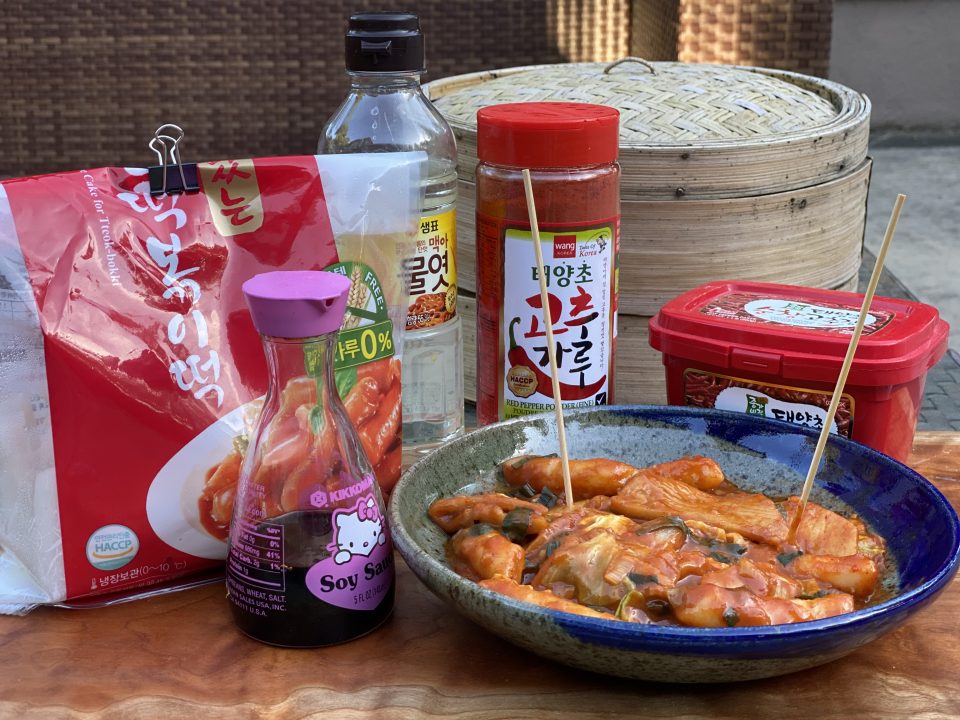
You can buy rice cakes and fish cakes in most Asian markets as well as the other needed spices. I didn’t have fish cakes for a batch, so I chose the next best thing in my pantry, SPAM. Don’t laugh, it was pretty good! Cook the rice cakes in an anchovy stock or water seasoned with Gochugaru (chili powder), Gochujang (chili paste), and corn syrup. Fish cakes, cabbage, and onions round out the dish. It takes all of 15 minutes to make. A perfect snack while watching a Giants game or my favorite K-drama.
The Recipe
Tteokbokki - Sweet & Spicy Rice Cakes
Ingredients
- 1 pound tteokbokki tteok 떡볶이 떡 about 24 3-inch long rice cake pieces - See note.
- 1 sheet eomuk 어묵 fish cake - aka oden or SPAM! or Japanese fishcake
- 4 ounces green cabbage yangbaechu 양배추
- 1 - 2 scallions optional
- 3 cups anchovy broth or water or any fish broth/dashi
- 3 tablespoons Korean red chili pepper paste gochujang 고추장
- 1-2 teaspoons Korean red chili pepper flakes gochugaru 고추가루 preferably finely ground)
- 1 tablespoon soy sauce
- 2 tablespoons sugar or use 1 tablespoon if you like it less sweet
- 1 tablespoon corn syrup
- 1 tablespoon minced garlic
Instructions
- Make fish broth if using. Soak the rice cakes for about 20 minutes if hardened or refrigerated. Cut the fish cake, cabbage, and scallions into about 2-inch long pieces.
- Add the anchovy broth (or water) to a large pan. Stir in the sauce ingredients. Bring it to a boil over medium high heat, stirring to dissolve the red chili pepper paste (gochujang).
- Add rice cakes, boil until the rice cakes become very soft and the sauce is thickened, about 8 - 10 minutes. Stir frequently so the rice cakes don't stick to the bottom of the pan.
- Add cabbage, green onions (optional) and fish cakes. Continue to boil, stirring constantly, for an additional 4 - 6 minutes. Depending on your rice cakes, it may need more time to reach a desired level of softness. Add more broth or water as necessary. Taste the sauce, and adjust the seasoning if needed. Serve immediately.
